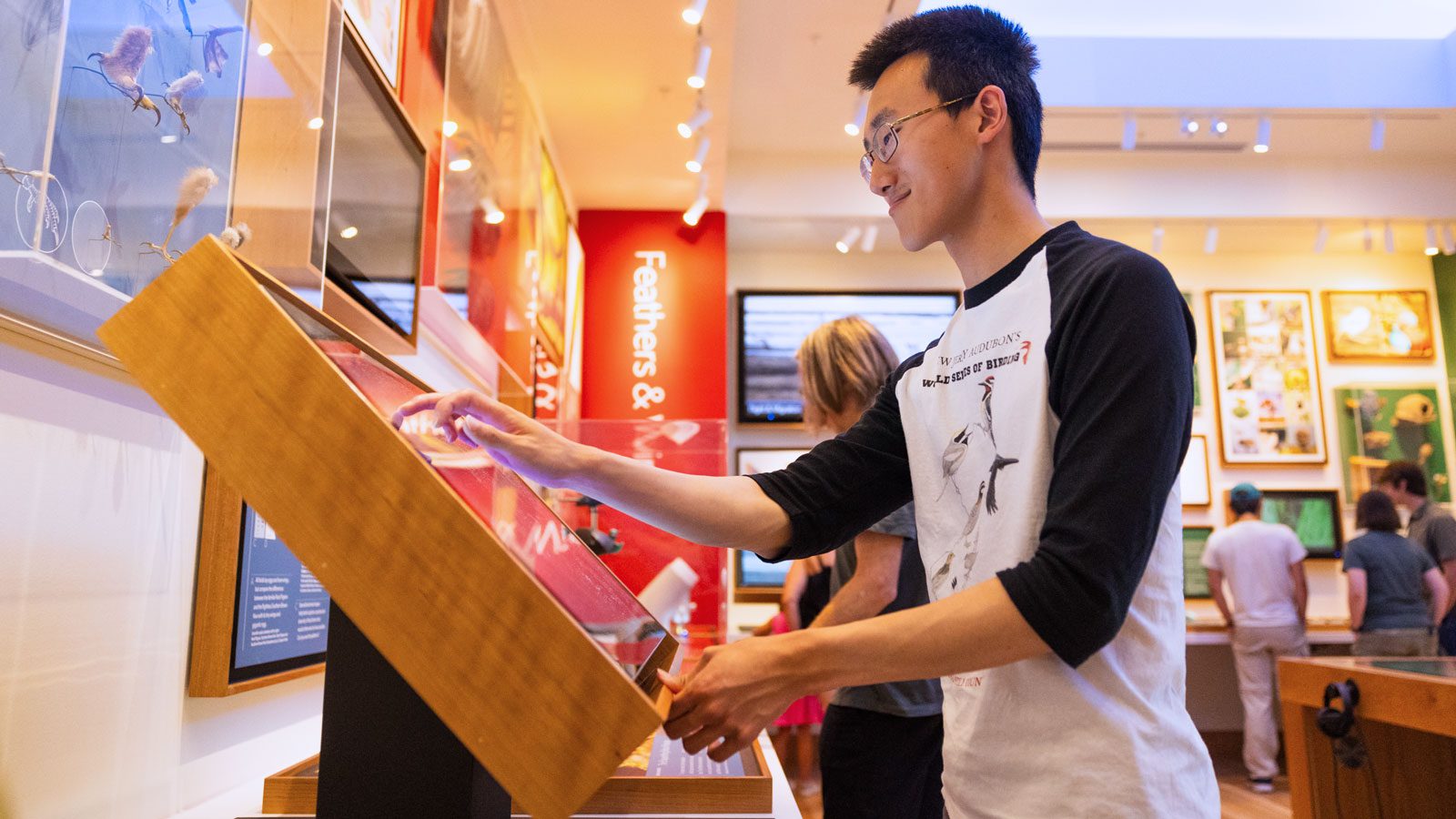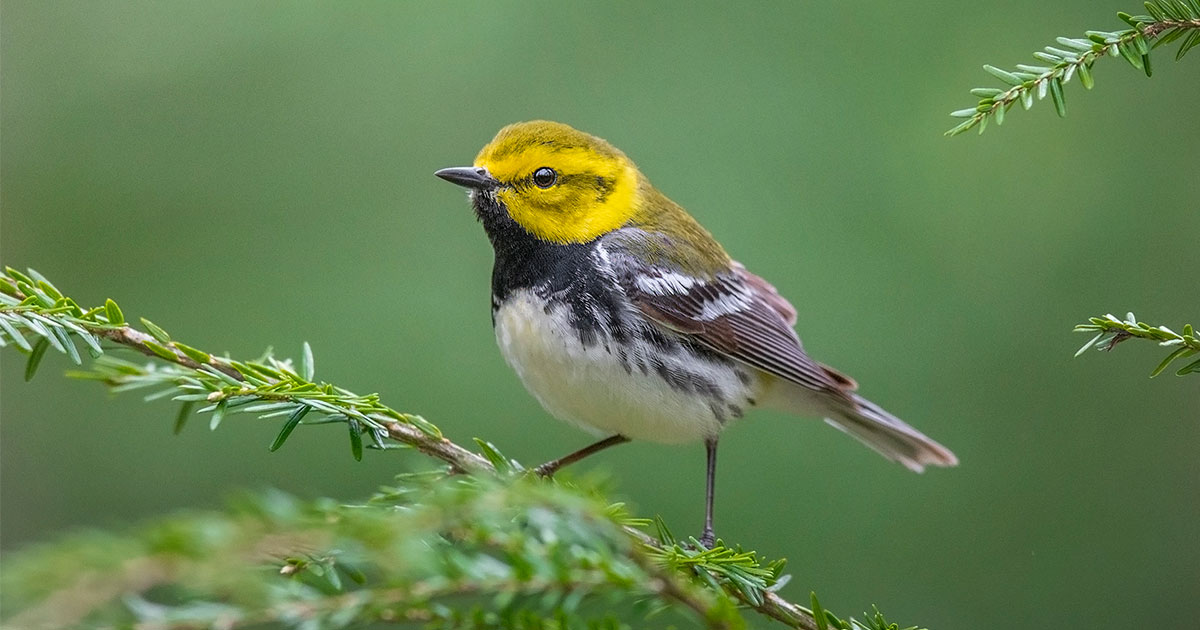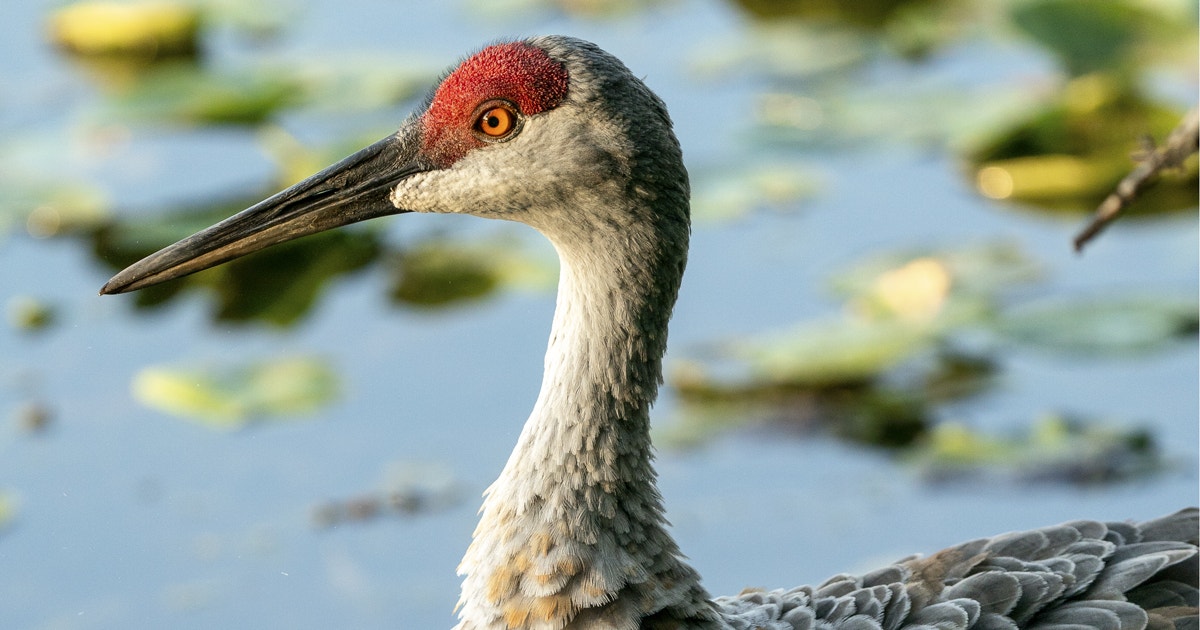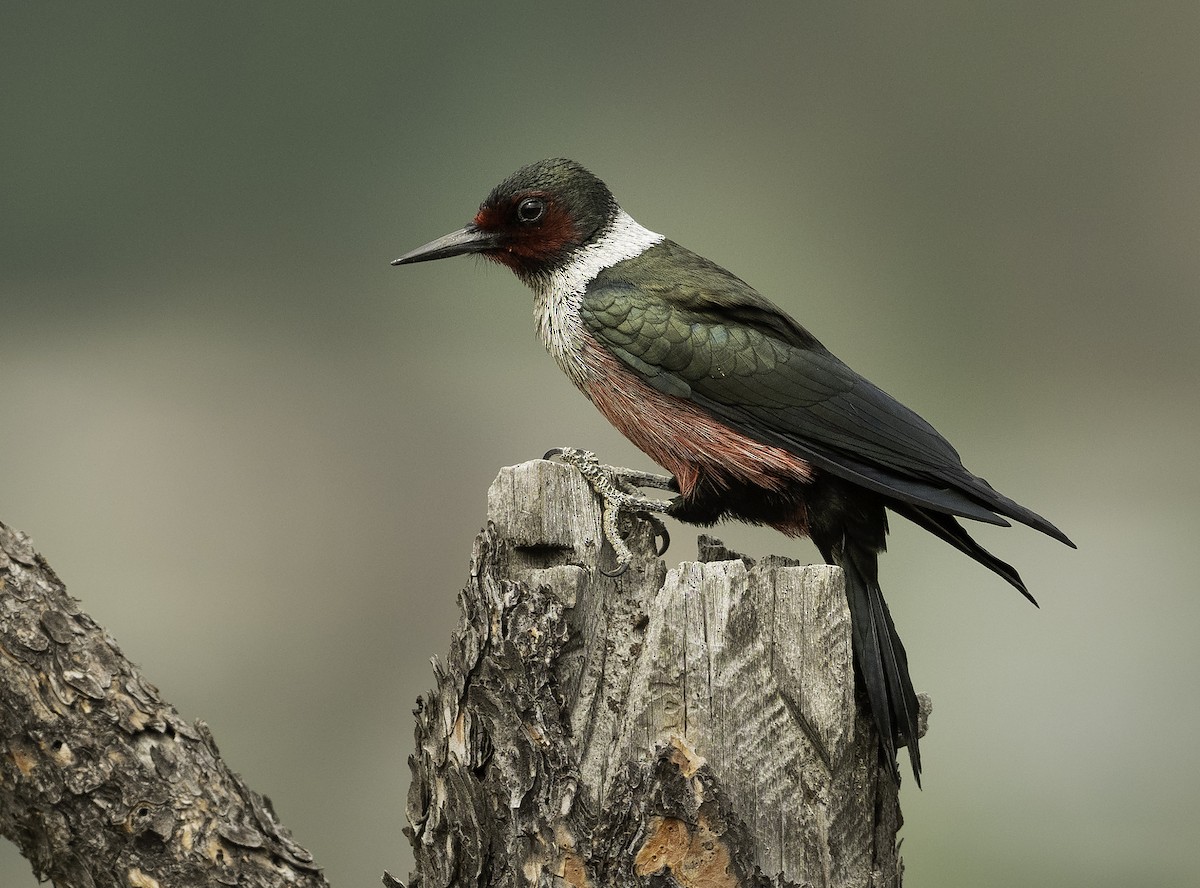From the Autumn 2024 issue of Living Bird magazine. Subscribe now.
In the middle of the newly redesigned Cornell Lab of Ornithology Visitor Center stands the Hope Wall, a massive circular display with the words “Birds and nature need our help. I can help by…”—and an invitation for visitors to fill out a white notecard, stick it on the wall, and share their feelings on birds and nature conservation.
“…bringing my daughter to wonderful places like this!” wrote one parent on a bright summer’s day in Sapsucker Woods this past July.
The Hope Wall is just one of many new exhibits added during a complete renovation of the Visitor Center with a focus to excite and inspire people about the science of birds. Originally opened in 2003, the Cornell Lab’s Visitor Center is one of the most-visited places in Ithaca, New York—attracting roughly 65,000 yearly visitors. After a temporary closure in 2023, the center reopened to the public in June 2024 with all-new exhibits using multimedia technologies and interactive displays to teach visitors how birds understand the world, and how people understand birds.


According to Mya Thompson, codirector of the Cornell Lab’s Center for Engagement in Science and Nature, the new Visitor Center is a physical manifestation of several decades of work in participatory science, involving the public in scientific efforts to accumulate data and study birds.
“We want people to leave here feeling like they’re part of the bigger mission,” Thompson says.
The Cornell Lab’s first participatory science project, the North American Nest Record Card program, began in the 1960s, recruiting people from across the continent to monitor bird nests near them and mail in 4×6 inch notecards with observational data such as clutch size and number of fledged young. Since then the Cornell Lab has launched several other programs—including Project FeederWatch, Celebrate Urban Birds, the Great Backyard Bird Count, and eBird—all with the mission to mobilize the general public in contributing to science.
“Individual scientists, even teams of scientists, can’t generate enough data to really understand what’s going on with populations of birds, but we have this passionate community of birders that can help us,” says Thompson.
That spirit of togetherness is woven into the Visitor Center’s redesign, says Lisa Kopp, the Cornell Lab’s visitor experience manager. She says the renovated space aims to make visitors feel “part of this community of people who are trying to protect birds and biodiversity.”

To plan a new kind of visitor experience, the Cornell Lab worked with C&G Partners, a design studio that helped design exhibitions at the 9/11 Memorial, Library of Congress, and National Museum of American History. Around a dozen new displays in the renovated center invite visitors behind the scenes and into the process of the scientific study of birds, including a bird discovery lab that explores how birds see, hear, and sense the world. The “Birds Here Today” interactive touchscreen wall displays real-time eBird data submissions, with a constant stream of yellow dots bubbling up across a map of the world whenever an eBird checklist is uploaded. Visitors can also submit their own sightings from walking around the Sapsucker Woods on the touchscreen wall, adding their personal experiences to the running global tally.
In addition to an in-person experience, the Cornell Lab released a virtual tour of the new Visitor Center on its website, with a clickable map showing users the different spaces in the center and links to descriptions and videos about the exhibits.
“It’s meant to give people an overview of what to expect and a teaser of something to get excited for,” explains Kopp.
The excitement kindled in the new Visitor Center, says Thompson, is hopefully the spark that moves people from watching birds to caring about birds to making the world a better place—for birds and everybody else.
“We are such a participatory organization,” Thompson says. “We want people to feel like ‘Let’s do this! Let’s do this together.’”
About the Author
Ruth Charles-Pedro’s work on this article as a student editorial assistant was made possible by the Cornell Lab of Ornithology Science Communications Fund, with support from Jay Branegan (Cornell ’72) and Stefania Pittaluga.



